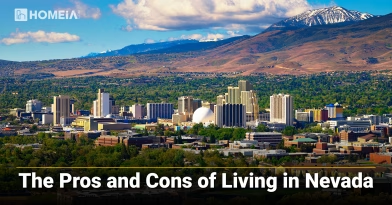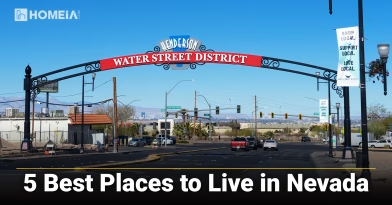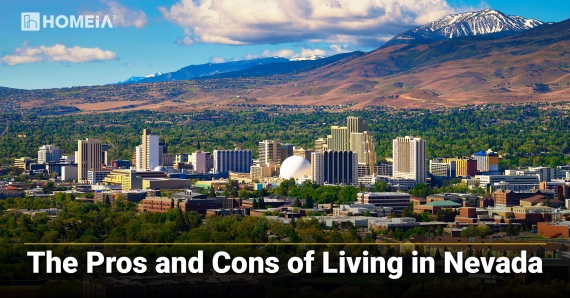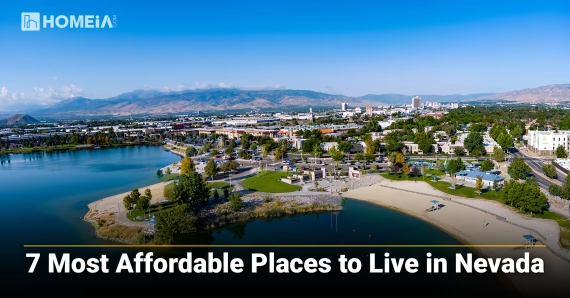Moving to Nevada: The Complete Relocation Guide & Checklist
- Local Editor:Local Editor: The HOMEiA Team
Published: Nov 07, 2025
- Category: City Living Guide

Bordered by California, Oregon, Idaho, Utah, and Arizona, Nevada offers a lifestyle defined by entertainment, natural wonders, and business-friendly policies. About 3.2 million residents call The Silver State home, drawn by its unique blend of world-class amenities and vast open spaces. Las Vegas provides 24/7 entertainment and urban conveniences, while Reno offers a more relaxed mountain lifestyle, and hundreds of smaller communities dot a landscape of high desert, mountain ranges, and stunning national parks.
Known for gaming, the Hoover Dam, and iconic desert landscapes, this part of the American West offers more to newcomers—no state income tax, growing tech industry, and culture of opportunity and independence. This comprehensive guide in Moving to Nevada covers essential relocation information, from preparing for the desert climate and understanding costs to navigating legal requirements for becoming a Nevada resident.
Table of Contents:
- Key Takeaways
- I. Methodology: How We Built This Guide
- 1. What Is It Really Like to Live in Nevada?
- 2. Cost of Living & Affordability
- 3. Jobs & Economy
- 4. Planning Your Move: A Timeline
- 5. Transportation
- 6. Legal Requirements & Paperwork
- 7. Financial Planning
- 8. Insider Tips from Locals
- Frequently Asked Questions About Moving to Nevada
Key Takeaways
- The Tax-Friendly Environment: Nevada has no state income tax, making it financially attractive for residents and businesses alike. The overall cost of living is competitive with other Western states.
- Diverse Climate Zones: Prepare for a high-desert climate with over 300 days of sunshine. Southern Nevada experiences hot summers and mild winters, while northern areas have four distinct seasons with cold, snowy winters.
- Specialized Economy: Gaming and tourism dominate the southern economy, while northern Nevada benefits from tech companies, logistics, and a growing manufacturing sector. The state offers diverse employment opportunities.
- Entertainment & Recreation: From world-class shows and dining in Las Vegas to outdoor adventures in Lake Tahoe and Red Rock Canyon, Nevada provides endless entertainment options for every lifestyle.
- Infrastructure & Accessibility: Major interstate highways connect Nevada’s cities, and McCarran International Airport provides global access. Rural areas may have limited services, so planning is essential.
I. Methodology: How We Built This Guide
Our relocation timeline and recommendations are based on a multi-factor analysis of the key elements that impact a move to Nevada. We compiled data from verified 2025 sources, including the U.S. Census Bureau, Bureau of Labor Statistics, Zillow housing market reports, FBI crime statistics, and Nevada state agencies.
Our evaluation criteria for advice and city selection are weighted as follows:
- Housing & Affordability (30%): Analyzing median home prices, rental costs, and utility averages to provide accurate budgeting advice.
- Access & Logistics (25%): Assessing the practicalities of moving goods and vehicles into the state, considering its central Western location.
- Legal & Administrative Requirements (20%): Outlining the essential steps for establishing residency, including vehicle registration, driver’s licensing, and voter registration.
- Community & Lifestyle Integration (15%): Providing insights into cultural norms, community events, and tips for building a social network.
- Economic Preparation (10%): Offering guidance on job searching and financial planning specific to the state economy.
Our Methodologies to create HOMEiA Score Ratings for Each Group of Content
HOMEiA uses a consistent, data-driven methodology to evaluate U.S. states for livability, affordability, and long-term value. Our analysis centers on key factors such as Housing and Affordability, Cost of Daily Living, Access and Infrastructure, Community Strength, Safety and Quality of Life, Economic Resilience and Job Market Performance…
1. What Is It Really Like to Live in Nevada?

A. Culture & Lifestyle
Nevada’s culture is a unique blend of Old West independence, modern entertainment sophistication, and outdoor adventure spirit. There’s an emphasis on personal freedom, entrepreneurship, and enjoying life to the fullest. The pace varies dramatically between the 24/7 energy of Las Vegas and tranquil outdoorsmanship of communities including Reno and Carson City. Community events such as local festivals, outdoor concerts, and recreational activities provide newcomers with natural opportunities to personally experience this authentic character.
B. Arts, Sports, and Entertainment
Vegas is world-renowned for its entertainment scene, boasting countless shows, concerts, and performances from top international artists. The city’s cultural scene also includes the Smith Center for the Performing Arts, numerous museums, and art galleries. For sports, they are home to professional teams in the NHL (Golden Knights), NFL (Raiders), and WNBA (Aces).) Outdoor sports are a way of life, from hiking and rock climbing in Red Rock Canyon to skiing and snowboarding at Lake Tahoe resorts. For a look at cultural life in another state, you might explore what it’s like to live in Tennessee.
C. Food Scene & Nightlife
Nevada’s culinary scene is famously diverse, with Las Vegas offering everything from celebrity chef restaurants by the likes of Gordon Ramsey and Wolgang Puck to authentic ethnic cuisine. Known for its one-of-a-kind nightlife, it’s centered around clubs, bars, and entertainment venues. Reno provides a more intimate dining and nightlife experience with local breweries and casinos. Smaller towns feature classic American diners and local favorites that serve as community gathering spots.
D. Outdoor Recreation & Natural Beauty
Outdoor recreation isn’t seen as an option; it’s central to the Nevada experience.
National Parks & Recreation Areas: Great Basin National Park, Lake Mead National Recreation Area, and Valley of Fire State Park provide unparalleled hiking, boating, and sightseeing.
Lake Tahoe: World-class skiing, water sports, and mountain biking in both summer and winter seasons.
Red Rock Canyon: Premier rock climbing and hiking minutes from Las Vegas.
Public Land: Millions of acres of BLM (Bureau of Land Management) land and national forests provide endless exploration opportunities.
E. Climate
Nevada has several distinct climate zones:
Southern (Las Vegas, Henderson): Low desert. Arid summers (100°F+), mild winters (40°F to 60°F). Dry year-round with minimal precipitation.
Northern (Reno, Carson City): High desert. Bearable summers (80°F to 95°F), cold winters (20°F to 40°F) with significant snowfall in the mountains.
Rural Areas: Greater temperature extremes, with boiling days and cool nights throughout much of the state.
The Pros and Cons of Living in Nevada
Nevada is more than casinos and deserts—it’s a state of opportunity, outdoor adventure, and tax-friendly living. However, challenges like scorching summers, high urban crime, and water shortages persist. This guide explores Nevada’s pros and cons, plus its best cities for professionals, families, and retirees seeking balance in the Silver State.
2. Cost of Living & Affordability
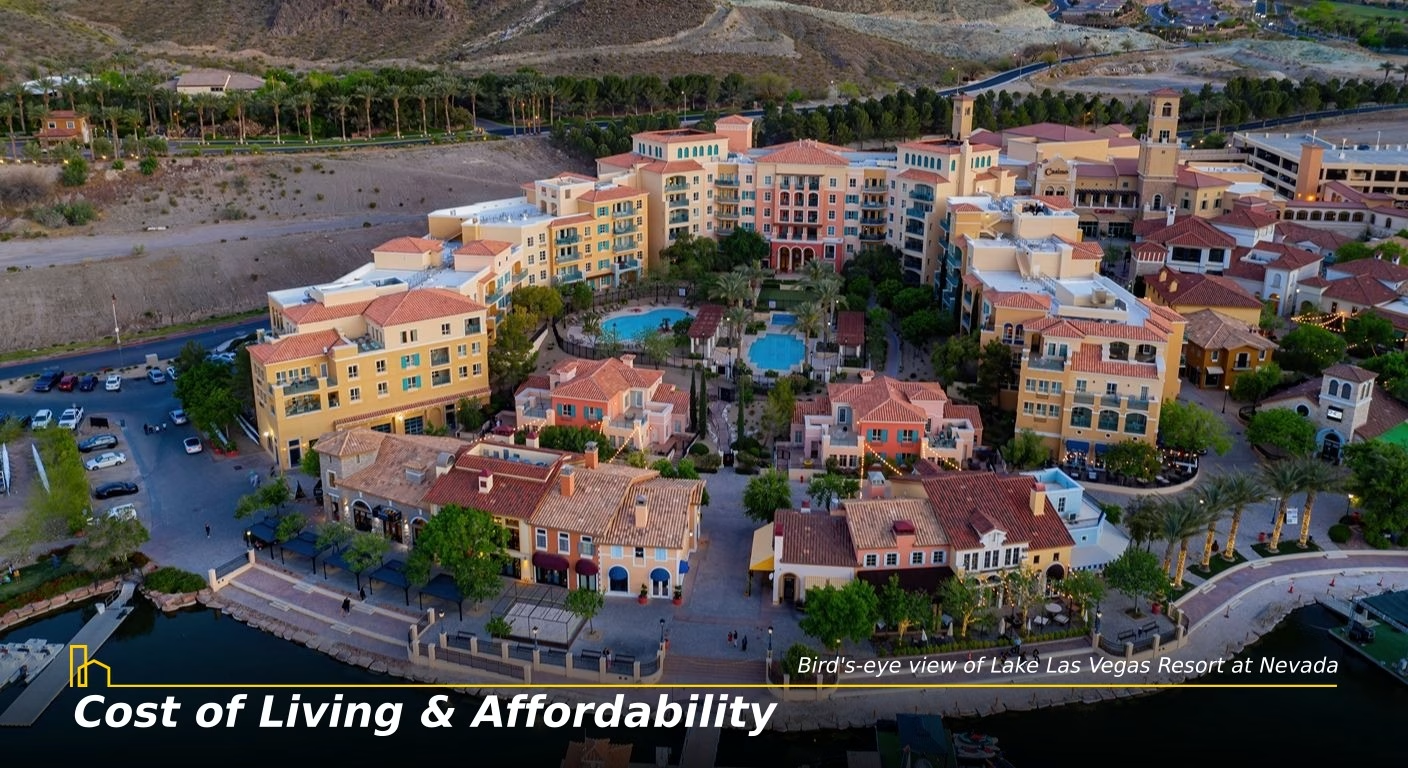
Nevada’s affordability varies significantly by region, with tax benefits balancing higher costs in popular areas.
A. Housing Market
Housing costs vary dramatically by city and region.
Housing Type | Las Vegas | Reno | Henderson | Carson City | Elko |
|---|---|---|---|---|---|
| Median Home Price | $425,000 | $550,000 | $480,000 | $450,000 | $350,000 |
| Avg. 2-Bedroom Rent | $1,400 | $1,600 | $1,500 | $1,300 | $1,100 |
B. Daily Expenses
Monthly Expense Category | Average Cost | Notes |
|---|---|---|
| Utilities (HVAC Focus) | $150–$400 | Highly seasonal; summer cooling costs in the south can be significant, while winter heating in the north adds expense |
| Groceries (Family of 4) | $600–$900 | Slightly above national average in urban areas due to transportation costs |
| Gasoline | ~$3.50/gallon | Prices fluctuate but are often competitive with regional averages |
| Internet | $70–$100 | Generally reliable service in cities; can be limited in very rural areas |
3. Jobs & Economy
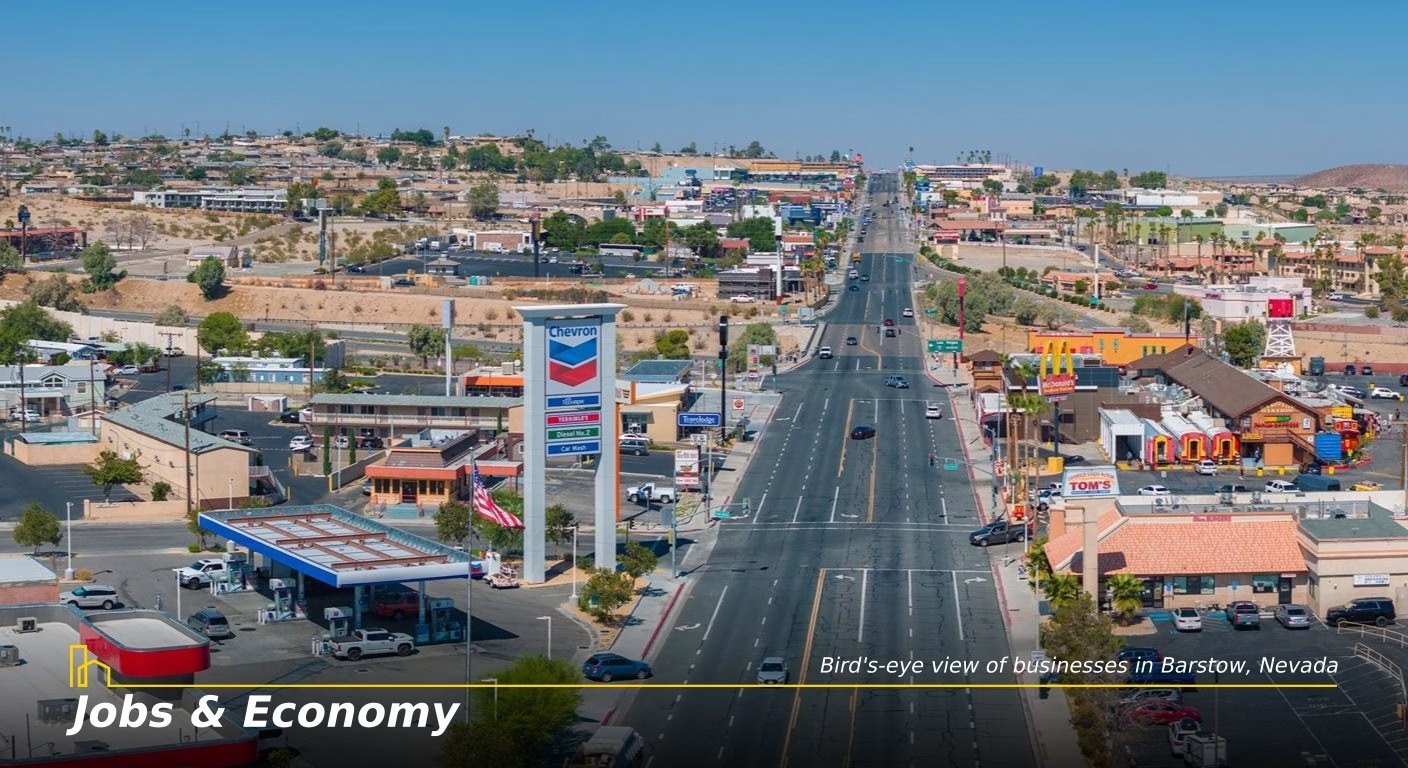
Nevada’s economy is driven by several key sectors:
Tourism & Hospitality: The largest industry, particularly in southern Nevada, providing employment in hotels, casinos, restaurants, and entertainment venues.
Technology & Innovation: Growing sector with companies including Tesla in northern Nevada and data centers throughout the state.
Logistics & Distribution: Strategic location makes Nevada a hub for warehousing and distribution centers.
Healthcare: Stable and growing sector, especially in population centers with aging demographics.
Mining: Traditional industry still providing high-paying jobs in rural areas, particularly gold and silver mining.
Recommended for you
4. Planning Your Move: A Timeline

A successful move to Nevada requires planning, especially given the state’s unique climate and geographic challenges.
Timeline | Essential Tasks | Important Details |
|---|---|---|
| 8–12 Weeks Before | Plan & Research | Get moving quotes, create budget, research new state laws, start decluttering |
| 6–8 Weeks Before | Notify & Pack | Give notice to your landlord, collect boxes, pack off-season items, transfer medical files |
| 4–6 Weeks Before | Transfer Services | Schedule utility shutoff/start, file USPS change of address, find new doctors, register kids for school |
| 2–4 Weeks Before | Finalize Details | Finish packing, plan travel route, confirm mover schedule, fill prescriptions |
| 1–2 Weeks Before | Prepare to Go | Pack essentials box, defrost fridge, clean home, confirm utility dates |
| Moving Day | Execute Move | Oversee loading, do a final walkthrough, keep documents handy |
| After Arrival | Settle In | Unpack basics first, update license/registration, explore new town |
=> Get the Relocation Guide & Checklist PDF — prepared for both Desktop and Mobile devices.
5. Transportation
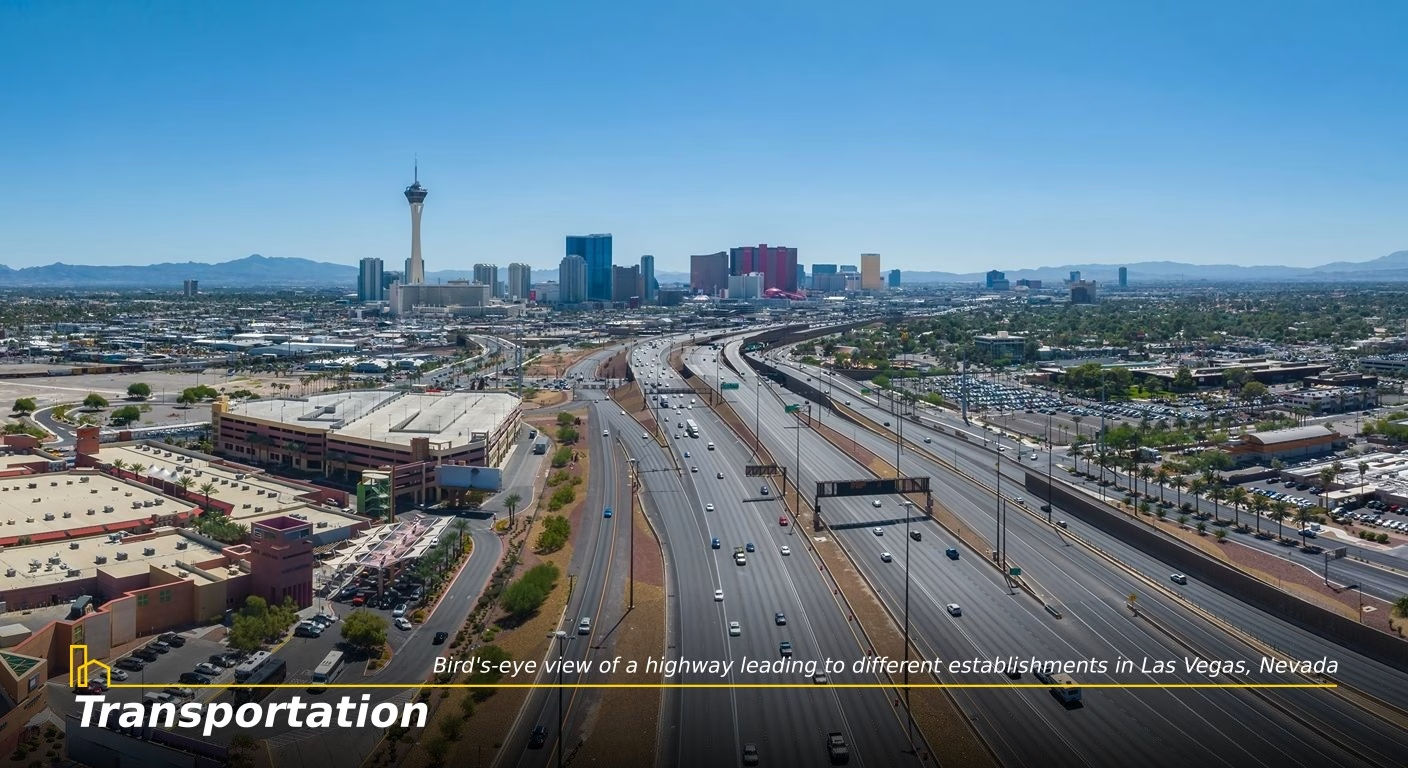
Driving: I-15 runs north-south (California to Arizona), and I-80 runs east-west (California to Utah). US-95 connects Las Vegas to Reno. These are the state’s primary transportation corridors. Rural communities are connected by state highways, but some areas can be extremely isolated.
Flying: Harry Reid International Airport (LAS) in Las Vegas is a major international hub. Reno-Tahoe International Airport (RNO) serves northern Nevada. Smaller airports in Elko and other cities offer connecting flights.
Public Transit: Las Vegas has a bus system and the Las Vegas Monorail serving the Strip. Reno has a bus system. Cars are essential for residents outside urban cores.
Winter Driving: In northern Nevada, winter tires or all-weather tires are recommended from November to March. Carry an emergency kit with water, blankets, and supplies, especially when traveling through remote areas.
7 Most Affordable Places to Live in Nevada
Nevada offers more than bright lights and casinos—it’s also home to affordable communities with no state income tax and below-average housing costs. This guide highlights seven budget-friendly Nevada cities for 2025, analyzing housing, utilities, and transportation to help you find financial stability and desert-inspired quality of life.
6. Legal Requirements & Paperwork

New residents must complete several tasks:
Vehicle Registration: Required within 30 days of establishing residency. You will need your out-of-state title, proof of Nevada insurance, VIN inspection, and payment of registration fees.
Driver’s License: Required within 30 days. You must surrender your previous license. Proof of identity, residency, and Social Security Number are needed.
Voter Registration: Registering to vote can occur when applying for your driver’s license or separately through the Secretary of State’s office.
Other: If you plan to hunt or fish, you will need to purchase a state license. Business owners should register with the Nevada Secretary of State.
7. Financial Planning

Create a realistic budget accounting for moving expenses and the higher utility costs in extreme climates. Keep housing expenditures below 30% of your income. Build a healthy emergency fund (3–6 months) to protect against the state’s economic variability in tourism-dependent areas. Take advantage of the no state income tax to increase savings or pay down debt faster.
The 5 Best Places to Live in Nevada: A City Comparison
Nevada blends dazzling city life with vast desert beauty and thriving suburban growth. This guide highlights the five best places to live in 2025, based on affordability, opportunity, safety, and lifestyle. From Las Vegas’s nonstop energy to Reno’s mountain charm, discover where your ideal Silver State home awaits.
8. Insider Tips from Locals

Stay Hydrated: The desert climate causes dehydration quickly. Always carry water, especially when outdoors or traveling.
Sun Protection is Essential: The high-altitude sun is intense year-round. Invest in quality sunscreen, sunglasses, and protective clothing.
Embrace the Seasons: Northern Nevada offers true four-season living with spectacular outdoor activities in each season. Southern Nevada’s mild winters are perfect for outdoor recreation.
Get Off the Strip: Las Vegas has vibrant neighborhoods and communities beyond the famous Strip. Explore local parks, restaurants, and cultural attractions.
Be Prepared for Extremes: Temperature swings can be dramatic, especially in desert areas. Dress in layers and always check weather forecasts before traveling.
Conclusion
Moving to Nevada offers more than a change of scenery; it provides an opportunity to embrace a lifestyle of freedom, entertainment, and natural wonder. The state’s tax-friendly policies, diverse economy, and unparalleled recreational opportunities make it an attractive destination for those seeking both adventure and financial advantages. With careful planning and an understanding of these unique characteristics, your relocation to the Silver State can be the beginning of an exciting new chapter. For those still considering options, our guide on moving to Colorado might provide an interesting comparison.
Recommended for you
Frequently Asked Questions About Moving to Nevada
1. What is the first step to moving to Nevada?
The first step is to secure employment and housing. While Nevada offers no state income tax, the cost of living in popular areas can be high, and having stable income and housing secured will ensure a smooth transition.
2. Should I drive or ship my car to Nevada?
Driving is typically the most practical option. Nevada is well-connected via major interstates (I-15 and I-80), making road trips straightforward. Shipping a car can be expensive and is generally unnecessary unless moving from an extreme distance.
3. How do I get my belongings to Nevada?
For large moves, national moving companies or truck rentals are common. Container services like PODS are also available. For smaller loads, freight services or driving a rented trailer can be cost-effective options.
4. What should I pack vs. buy there?
Bring essential documents, specialized equipment, and personal items. Everyday household goods and furniture are better purchased in Nevada to avoid high moving costs. The dry climate means you’ll need different clothing and skincare products than in humid regions.
5. Is it hard to make friends in Nevada?
Generally, no. Nevadans are typically friendly and welcoming, especially in communities with many transplants. Join local recreational groups, volunteer organizations, or community events to meet people quickly. The state’s active outdoor culture provides many opportunities for social connection.
6. How does Nevada’s tax structure benefit residents?
Nevada’s lack of state income tax is a significant financial advantage, allowing residents to keep more of their earnings. However, property taxes and sales taxes help fund state services, so it’s important to understand the complete tax picture when budgeting.
7. What should I know about Nevada’s climate before moving?
Prepare for extreme temperature variations, especially in desert areas. Southern Nevada experiences intense summer heat requiring significant air conditioning, while northern Nevada has cold winters that demand proper heating systems and winter clothing. The dry climate also requires attention to hydration and skin care.
8. Are there good educational opportunities in Nevada?
Nevada offers educational options including the University of Nevada system with campuses in Las Vegas and Reno, community colleges, and specialized trade schools. The state also has both public and private K-12 options, though school quality can vary by district.
9. What healthcare options are available in Nevada?
Major urban areas like Las Vegas and Reno have comprehensive healthcare systems with multiple hospitals and specialty care facilities. Rural areas may have more limited options, so it’s important to research healthcare access when choosing where to live.
10. How does Nevada’s economy affect job opportunities?
While tourism and hospitality remain dominant, Nevada’s economy is diversifying with growth in technology, healthcare, and logistics sectors. Job opportunities vary significantly by region, with northern Nevada benefiting from tech investments and southern Nevada centered around entertainment and tourism.
For those interested in exploring other relocation options, you might consider moving to Utah or moving to California. Each offers unique advantages for different lifestyles and career goals.
Table of Contents:
- Key Takeaways
- I. Methodology: How We Built This Guide
- 1. What Is It Really Like to Live in Nevada?
- 2. Cost of Living & Affordability
- 3. Jobs & Economy
- 4. Planning Your Move: A Timeline
- 5. Transportation
- 6. Legal Requirements & Paperwork
- 7. Financial Planning
- 8. Insider Tips from Locals
- Frequently Asked Questions About Moving to Nevada
HOMEiA is a city guide site where visitors can find detailed information about communities of interest. HOMEiA’s City Guides, created in partnership with local writers and editors, are curated lists of the best, safest, and most affordable places to live. The guides feature the HOMEiA Score, a proprietary index that rates communities on such factors as housing costs, education, employment, etc.
HOMEiA.com aims to be the premier site for people planning to relocate, providing them with insightful content and connecting them with skilled real estate professionals.
We also empower real estate professionals to establish or strengthen their web presence by highlighting their experience, knowledge and achievements. If you’re selected to join our list of certified real estate professionals, you will distinguish yourself from your peers — and earn HOMEiA’s support.
If you believe in HOMEiA’s mission, please share our website with others.
Table of Contents:
- Key Takeaways
- I. Methodology: How We Built This Guide
- 1. What Is It Really Like to Live in Nevada?
- 2. Cost of Living & Affordability
- 3. Jobs & Economy
- 4. Planning Your Move: A Timeline
- 5. Transportation
- 6. Legal Requirements & Paperwork
- 7. Financial Planning
- 8. Insider Tips from Locals
- Frequently Asked Questions About Moving to Nevada


